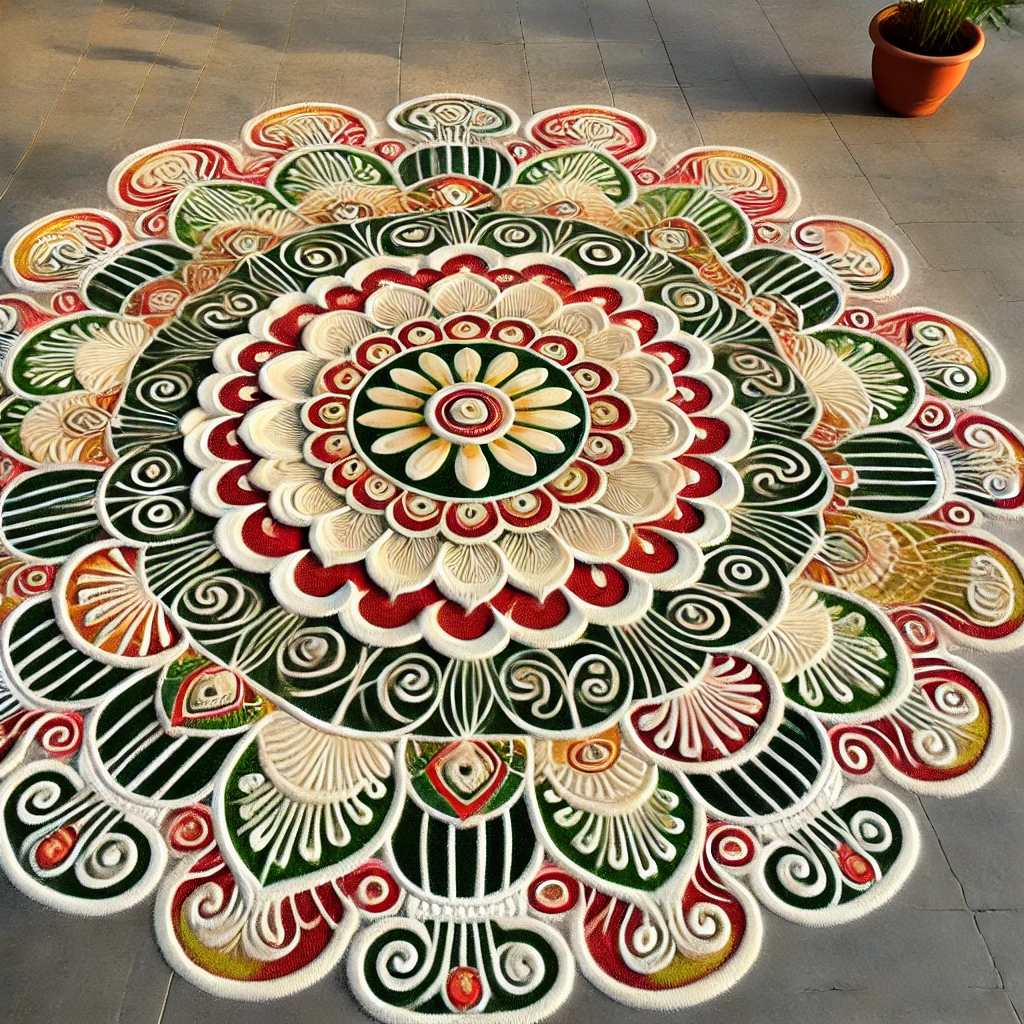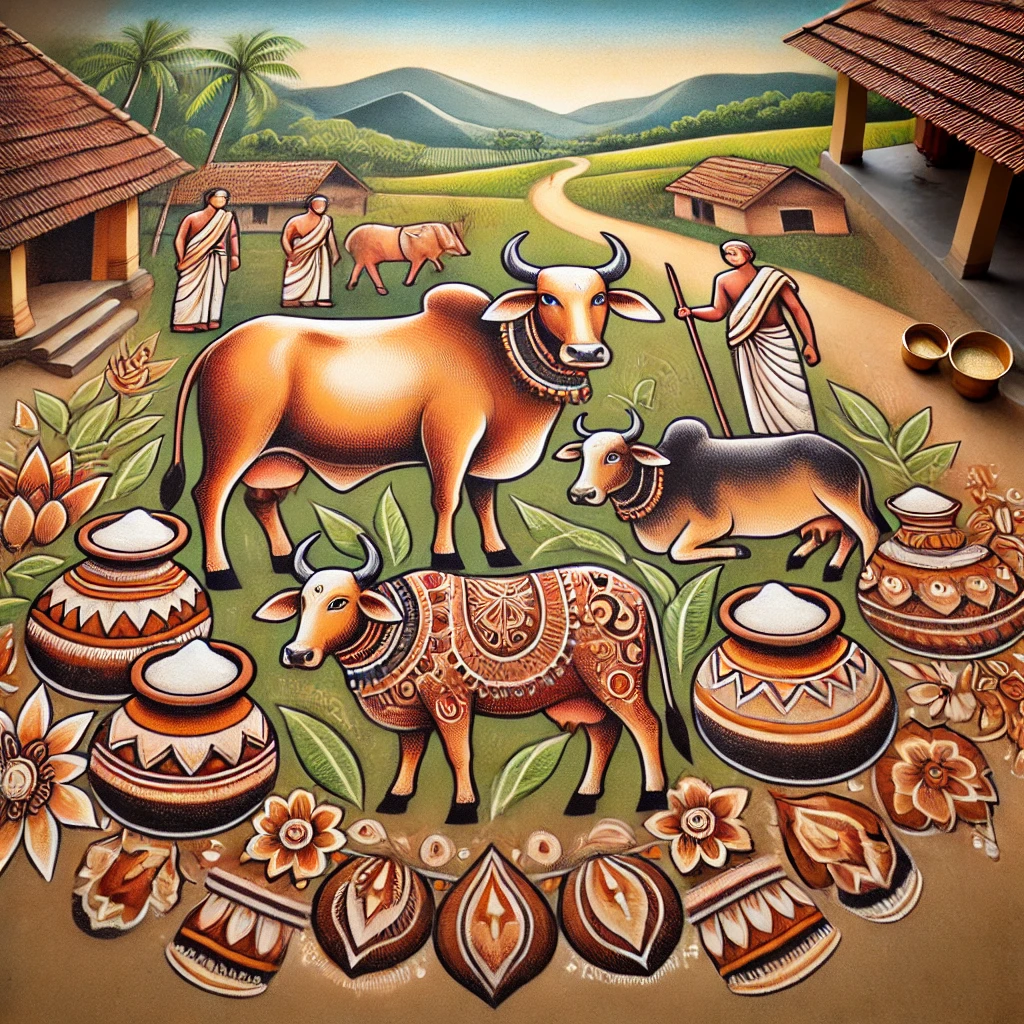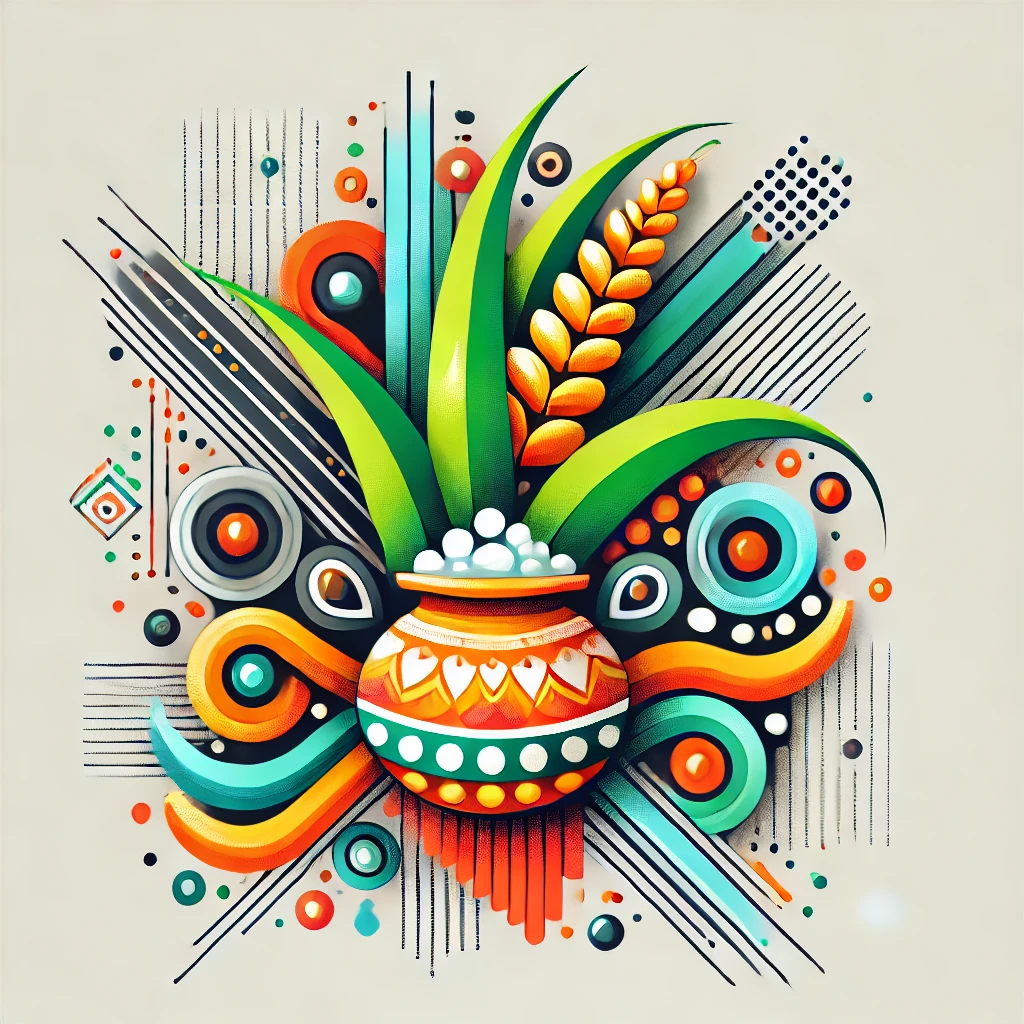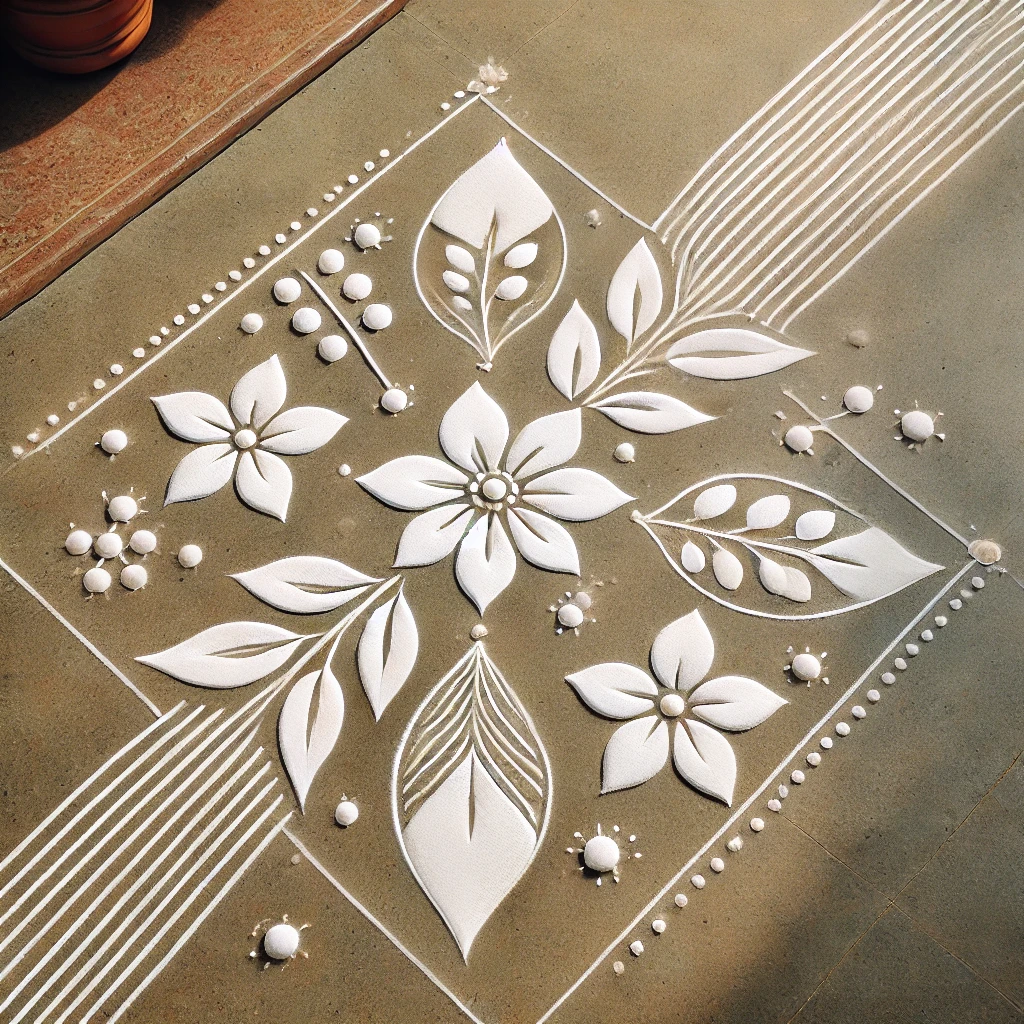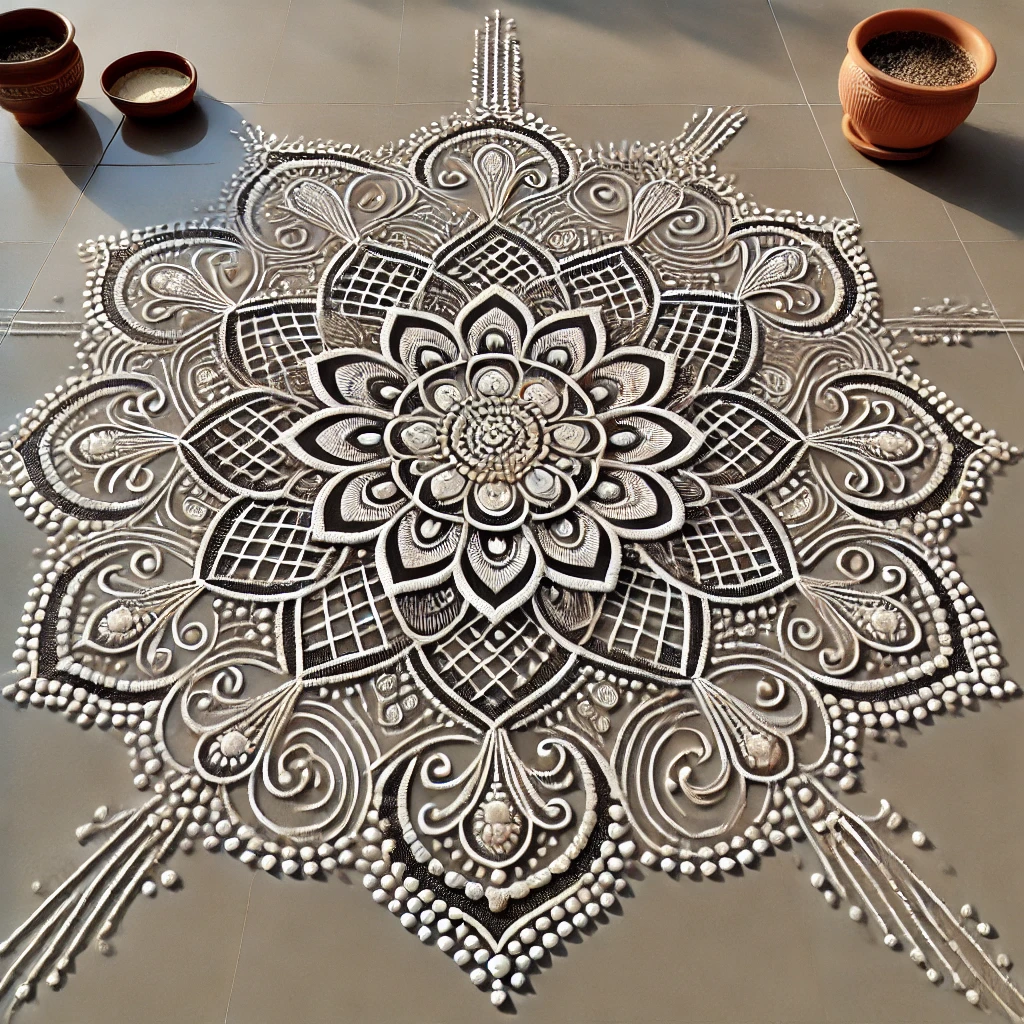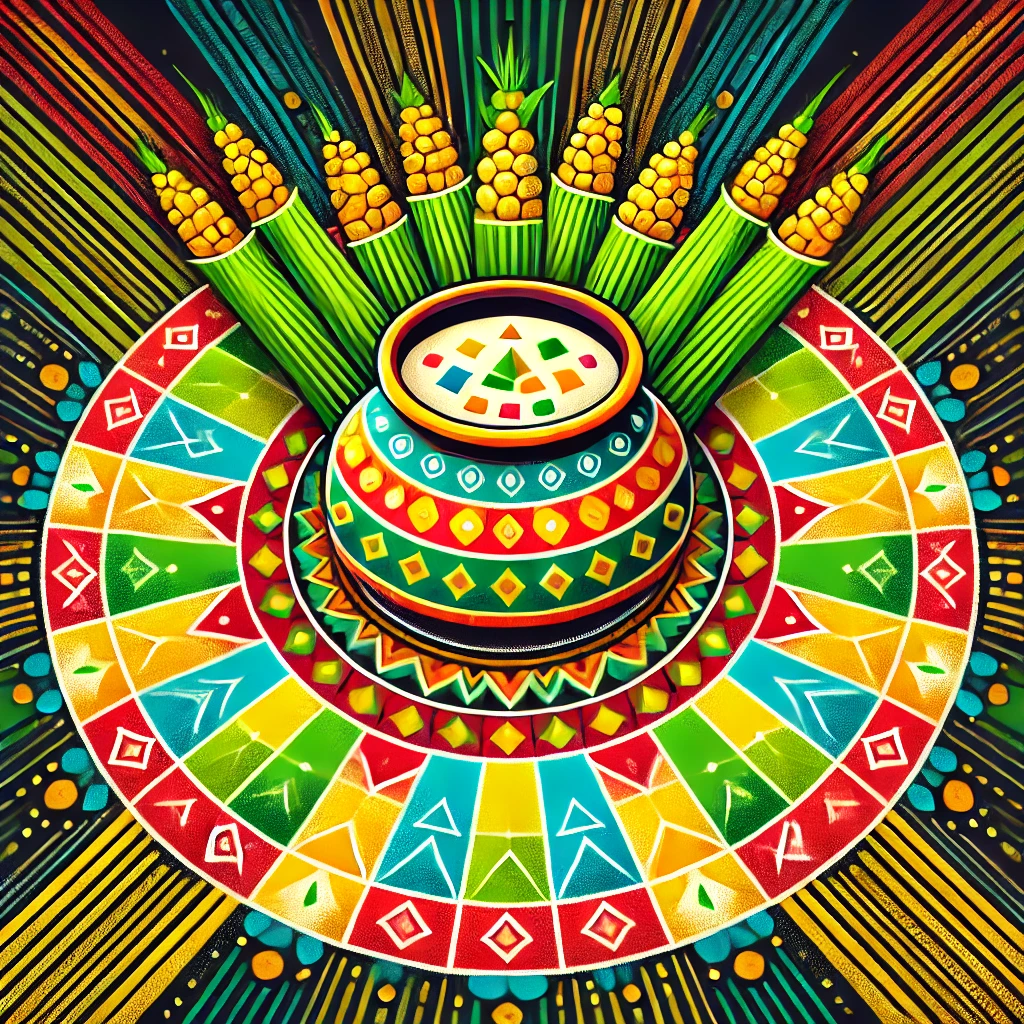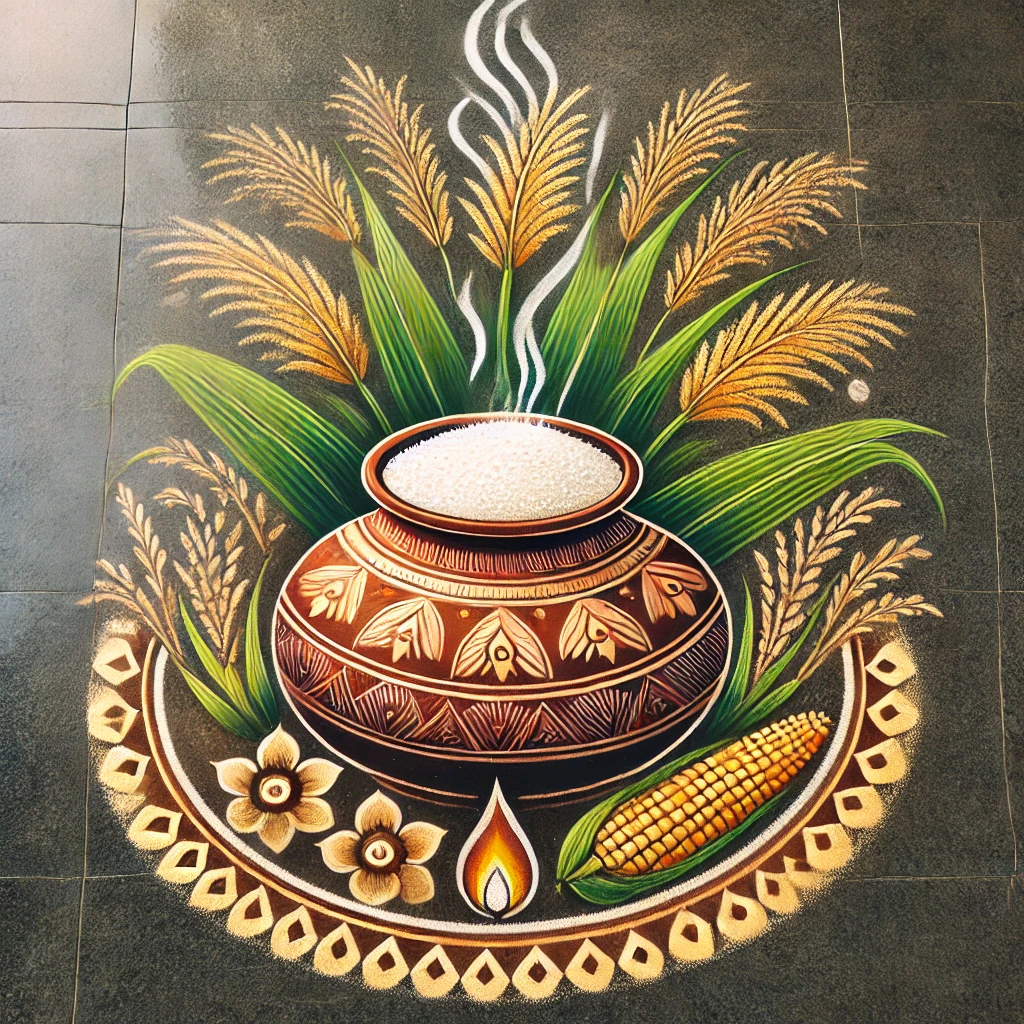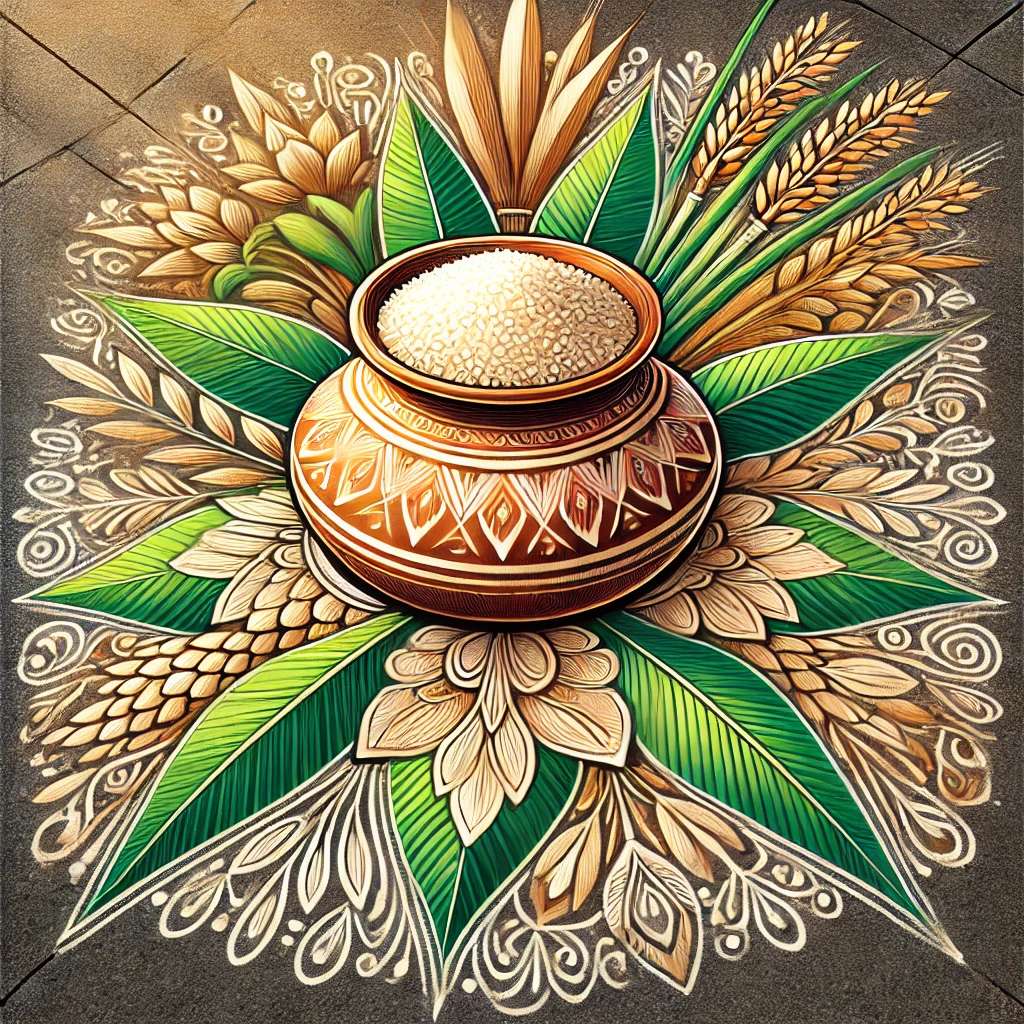Table of Contents
Pongal, the harvest festival celebrated primarily in Tamil Nadu, is a time of joy, gratitude, and cultural expressions. One of the most cherished traditions during Pongal is the creation of Pongal Kolam. These intricate designs are drawn on the ground with rice flour and colorful powders, symbolizing prosperity, happiness, and an invitation for blessings into the home. This article delves into the significance, types, and beauty of Pongal Kolam, focusing on traditional Pongal Kolam, Mattu Pongal Kolam, new Pongal Kolam designs, and more.

The Significance of Pongal Kolam
Pongal Kolam is not just an artistic practice but a deep-rooted cultural ritual. Traditionally, these designs are made using rice flour, which serves as a food offering to ants, birds, and other creatures. This act signifies harmony between humans and nature. During the four days of Pongal, each day has its unique significance, reflected in the Pongal Kolam designs. The kolams are believed to bring prosperity and keep negativity away from homes.
Also Check: Pongal Wishes 2025
Traditional Pongal Kolam
Traditional Pongal Kolam often features symmetrical patterns, geometric shapes, and motifs inspired by nature, such as flowers, birds, and animals. These designs are made early in the morning after cleaning the house and sprinkling water at the entrance. A significant motif in traditional Pongal Kolam is the Pongal paanai kolam or Pongal pot kolam, symbolizing the overflowing pot of rice, which represents abundance and gratitude.
These traditional designs are passed down through generations and often include patterns that are both intricate and meaningful. For instance, pongal kolam with dots is a popular method where dots are arranged in a grid, and lines are drawn to connect them, forming beautiful patterns.
Mattu Pongal Kolam
The third day of Pongal, known as Mattu Pongal, is dedicated to honoring cattle for their contribution to agriculture. Mattu Pongal Kolam typically features designs that depict bulls, cows, and scenes of village life. These kolams emphasize the importance of livestock in rural communities and their role in bringing prosperity. Bright colors and elaborate designs make Mattu Pongal Kolam stand out, and they are often drawn in front of cattle sheds and temples.
New Pongal Kolam
While traditional kolams hold a timeless charm, new Pongal Kolam designs are gaining popularity. These contemporary patterns incorporate innovative elements and modern art styles, appealing to the younger generation. Pongal rangoli kolam new design often merges traditional motifs with abstract art, creating a fusion that resonates with today’s aesthetics.
The use of vibrant colors, floral decorations, and themes that reflect current events or personal creativity are characteristic of these designs. For example, a new Pongal Kolam might include motifs of the sun, sugarcane, and a stylized Pongal pot to reflect the essence of the festival.
Do Check: GK Questions on Pongal
Simple Pongal Kolam
Not everyone has the time or skill to create elaborate kolams. For such individuals, simple Pongal Kolam offers a way to participate in the tradition. These designs are minimalistic yet elegant, focusing on basic geometric shapes or small motifs like flowers, stars, or a simple pongal pot kolam. They are ideal for beginners or those with busy schedules, allowing everyone to embrace the festive spirit.
Pongal Kolam with Dots
A distinctive style in kolam art is the use of dots as a guiding structure. Pongal kolam with dots involves placing dots in specific arrangements and connecting them to form intricate designs. This method requires precision and creativity, making it both a challenge and a delight for artists. The dot-based designs often result in symmetrical patterns, adding a unique charm to the kolam.
Pongal Rangoli Kolam
Pongal rangoli kolam takes the traditional kolam a step further by incorporating colors. Using natural powders or synthetic colors, these designs become vibrant displays of art. The bright hues symbolize the joy and abundance of the harvest season. Pongal rangoli kolam new design often combines the traditional art form with modern themes, creating visually stunning patterns.
Popular themes for pongal rangoli kolam include depictions of the sun, sugarcane, cattle, and the overflowing Pongal pot. These designs are typically drawn in front of houses, temples, and community spaces, adding a festive touch to the surroundings.
Also Check: Famous Festivals of India
Pongal Paanai Kolam and Pongal Pot Kolam
The Pongal paanai kolam or Pongal pot kolam is a central motif in Pongal celebrations. The pot is a symbol of prosperity, as it represents the overflowing of rice and milk during the Pongal ritual. These kolams are often decorated with sugarcane stalks, turmeric plants, and other elements associated with the harvest.
Artists often add steam rising from the pot or intricate patterns around it, symbolizing the warmth and abundance of the festival. These designs are a favorite among children and adults alike, as they capture the essence of Pongal in a single, meaningful image.
Pongal Kolam 2025
With Pongal just around the corner, many are already planning their Pongal Kolam 2025 designs. Social media platforms are abuzz with ideas, tutorials, and inspirations for creating the perfect kolam. Whether it’s a simple Pongal Kolam, a new Pongal Kolam, or a traditional design, the emphasis remains on creativity and cultural significance.
How to Create Stunning Pongal Kolam Designs
Creating a beautiful Pongal Kolam requires some preparation and practice. Here are some tips to get started:
- Choose the Design: Decide whether you want to create a traditional Pongal Kolam, a Mattu Pongal Kolam, or a pongal rangoli kolam new design. Sketch it on paper first to get a clear idea.
- Prepare the Surface: Clean the area where you plan to draw the kolam and sprinkle water to settle the dust. This ensures a clean base for the design.
- Use Quality Materials: For traditional kolams, rice flour is a must. For colorful designs, use natural or synthetic powders. For pongal kolam with dots, ensure the dots are evenly spaced.
- Practice Symmetry: Symmetry is crucial for most kolam designs. Use a grid or divide the area into sections to maintain balance.
- Add Personal Touches: Incorporate elements like the Pongal pot, sugarcane, or your unique creative ideas to make the kolam stand out.
Conclusion
Pongal Kolam is more than just an art form; it is a celebration of culture, community, and the bounties of nature. Whether it’s a traditional Pongal Kolam, a simple Pongal Kolam, or a vibrant pongal rangoli kolam, these designs bring people together and fill homes with positivity and beauty. As we gear up for Pongal Kolam 2025, let us honor this rich tradition while embracing new and innovative designs. After all, each kolam tells a story of gratitude, creativity, and joy, making Pongal a truly special festival.
FAQs on 10+ Pongal Kolam 2025 Ideas
What is Pongal Kolam, and why is it significant?
Pongal Kolam is a traditional decorative art form created during the Pongal festival in Tamil Nadu. Made with rice flour and colorful powders, it symbolizes prosperity, joy, and gratitude to nature. It also serves as an offering to birds and insects, reflecting the harmonious coexistence of humans and nature.
How is traditional Pongal Kolam different from modern designs?
Traditional Pongal Kolam features symmetrical patterns, geometric shapes, and motifs like flowers, animals, and the Pongal pot. Modern designs, often called new Pongal Kolam, incorporate contemporary art elements, vibrant colors, and abstract motifs while still honoring the festival's essence.
What is the purpose of using dots in Pongal Kolam designs?
Pongal Kolam with dots involves placing a grid of evenly spaced dots and connecting them with lines or curves to form intricate patterns. This technique adds precision and symmetry to the designs, making them aesthetically pleasing and easier to replicate.
What are the key motifs used in Pongal Kolam?
Key motifs in Pongal Kolam include the Pongal pot (Paanai Kolam), sugarcane, sun, turmeric leaves, and animals like cows and bulls, especially in Mattu Pongal Kolam. These motifs reflect themes of abundance, gratitude, and the agricultural significance of Pongal.
Can beginners try Pongal Kolam, and what are some simple designs?
Yes, beginners can try simple Pongal Kolam designs. These often include basic geometric shapes like circles, stars, or flowers. Dot-based kolams are also beginner-friendly as they provide a structured approach to creating designs.
What is the difference between Pongal Kolam and Pongal Rangoli Kolam?
While both are decorative art forms, Pongal Kolam is traditionally made with rice flour and focuses on white designs. Pongal Rangoli Kolam, on the other hand, incorporates bright colors and is often more vibrant, blending traditional and modern artistic styles.
How can I create my own Pongal Kolam for 2025?
To create a Pongal Kolam for 2025: Choose a design (traditional or modern). Use rice flour for traditional designs and add colors for a rangoli effect. Clean the area and ensure a smooth surface. Plan the design using a grid of dots if needed. Add personal touches like sugarcane or floral accents to make it unique.




